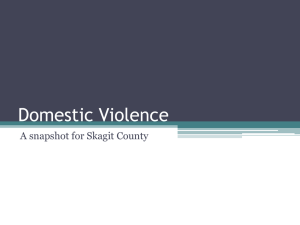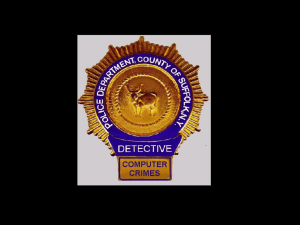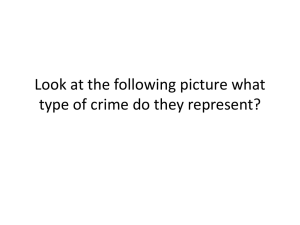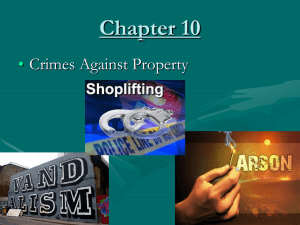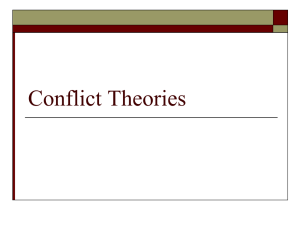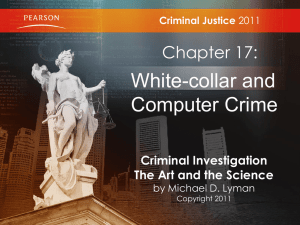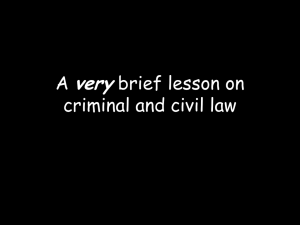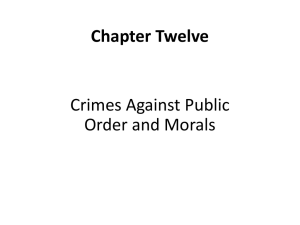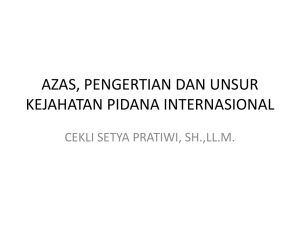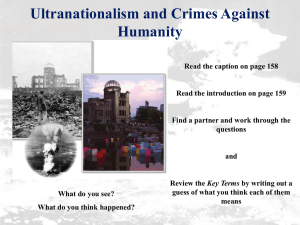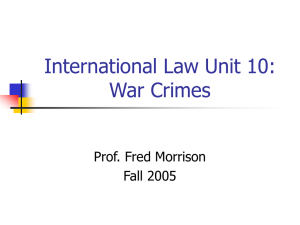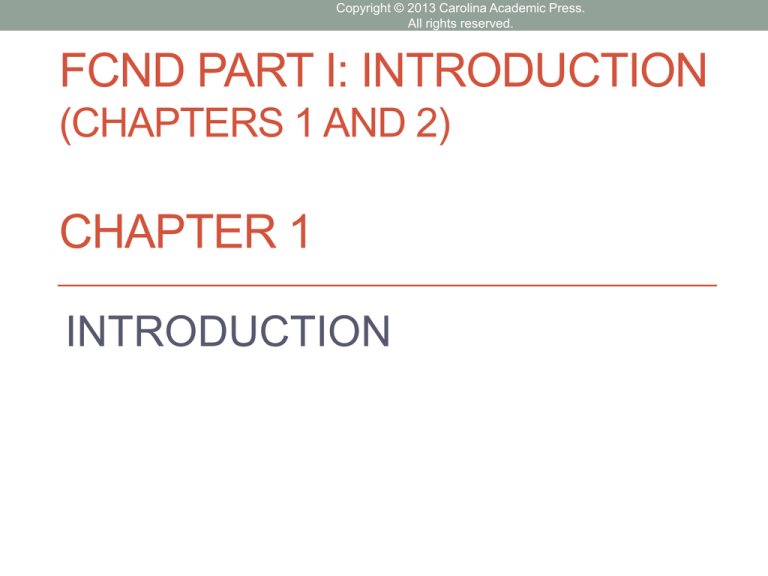
Copyright © 2013 Carolina Academic Press.
All rights reserved.
FCND PART I: INTRODUCTION
(CHAPTERS 1 AND 2)
CHAPTER 1
INTRODUCTION
Copyright © 2013 Carolina Academic Press.
All rights reserved.
Outline
• What is Crime?
• Types of Crime
• What is Criminal Law?
• Normative Systems
• Changing Times, Changing Laws?
• What is Criminology?
• The Evolution of Criminology
• Codified Laws and Prescribed Punishments
• The Emergence of Classical Criminology (1700s)
• The Emergence of Positive Criminology (1800s)
• The Precursors of Sociological Criminology (1800s)
• The Emergence of Criminology as Its Own Discipline
• A Word About Theory
Copyright © 2013 Carolina Academic Press.
All rights reserved.
What is Crime?
• Tappan’s (1960) definition: “an intentional act or
omission in violation of criminal law (statutory and
case law), committed without defense or justification,
and sanctioned by the state as a felony or
misdemeanor”
• What constitutes a crime varies by time and place
• Drinking age in the UK versus the US and drinking age in the US over
time
• The prescribed sanctions (punishments) for crime vary widely
• The death penalty is used in 36 states and at the federal level and in
those 36 states, what crimes can get the death penalty vary
Copyright © 2013 Carolina Academic Press.
All rights reserved.
Types of Crime
• Four ways to classify crime by type
1. Mala in se versus mala prohibita crimes
• Mala in se crimes are inherently bad
• These are the worst of the worst crimes (murder, rape, robbery, theft)
and are universally condemned as wrong and deserving of punishment
• Mala prohibita crimes are bad because they have been
designated as such
• Examples include drug use and prostitution and are illegal in certain
places and during certain times
• Whether these actions are considered wrong and deserving of
punishment depends on whether they have been called crimes
Copyright © 2013 Carolina Academic Press.
All rights reserved.
Types of Crime
• Four ways to classify crime by type (cont.)
• 2. Felonies versus misdemeanors
• This allows us to categorize crimes by their seriousness
• Felonies are considered more serious and this is
reflected in the prescribed punishment
• In LA, the punishment for a felony includes death or imprisonment
at hard labor
• Felonies also carry longer sentences than misdemeanors
• A sentence of one year or more of incarceration is reserved for felonies
Copyright © 2013 Carolina Academic Press.
All rights reserved.
Types of Crime
• Four ways to classify crimes by type (cont.)
• 3. Violent versus nonviolent
• Violent crimes involve the actual, attempted or
threatened use of force against a person; the use of a
weapon may be involved
• Examples include murder, rape, robbery
• Nonviolent crimes do not involve the use of force
against a person and can include both property and
public order crimes
• Examples include burglary, prostitution and drug use
• Even though these crimes are not violent, they can be classified as
felonies and carry long prison sentences
Copyright © 2013 Carolina Academic Press.
All rights reserved.
Types of Crime
• Four ways to classify crime by type (cont.)
• 4. Personal versus property crimes
• Personal crimes include murder, rape, robbery,
assault and domestic violence
• Property crimes involve the theft or destruction of
property
• Personal crimes are considered more serious than
property crimes
• But property crimes can result in prison time
• Some crimes are both personal and property crimes
• E.g., armed robbery
Copyright © 2013 Carolina Academic Press.
All rights reserved.
What is Criminal Law?
• Before there was a such thing as law, how was behavior
regulated?
• Maine (1876): groups of families form primitive societies and
those families with status control the behavior of others through
caprice
• Sumner (1906): people’s habits and society’s customs that
satisfy basic needs are called folkways
• Over time, folkways come to regulate the behavior of subsequent
generations
• Some get stronger, some change, some fall away as unimportant
• They are VERY culturally specific (polite habits and customs in one
society may be abhorrent in another)
Copyright © 2013 Carolina Academic Press.
All rights reserved.
What Is Criminal Law?
• A formal criminal law comes into existence when
society has an interest in proscribing or prescribing
and punishing certain acts
• Our modern laws have a direct connection to the Law of
the Twelve Tables from Rome in 450 B.C.
• When we think about the creation of laws, we should
think about who creates them and why
• Chambliss (1974): those with special interests and political power
may pass laws that support their interests and punish the activities
of those in opposition
Copyright © 2013 Carolina Academic Press.
All rights reserved.
Changing Times, Changing Laws?
• Laws often remain on the books long after their relevance
has passed
• Examples of sodomy, treason, misprision of treason and criminal
anarchy in Louisiana
• Why is this so?
• Legislators rarely vote to remove laws from the books for
fear of being labeled soft on crime
• When new laws are passed, there is an increase in the
number of activities that are considered criminal
The full set of PowerPoint slides is
available upon adoption.
Email bhall@cap-press.com
for more information.


